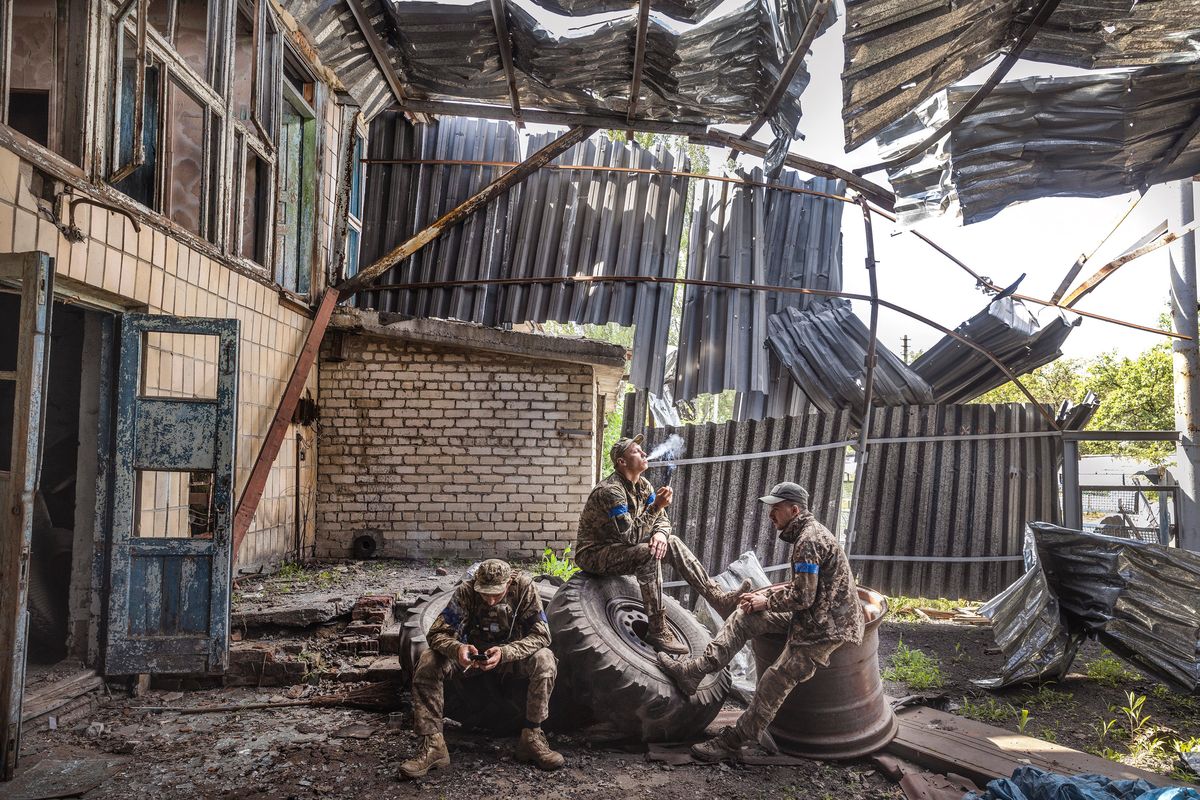Battling Russia, Ukrainian leaders also fight high expectations

KYIV, Ukraine – As much of the world pays close attention to the slow progress of Ukraine’s counteroffensive, its leaders are trying to tamp down expectations, saying that the fight to expel the Russian invaders was inevitably going to be a hard, bloody slog, not a lightning advance.
“Some people want some sort of a Hollywood movie, but things don’t really happen that way,” Ukrainian President Volodymyr Zelenskyy said Wednesday, when asked in a BBC interview about the attitudes of the allies supplying Ukraine with weapons.
“We would definitely like to make bigger steps,” he said, according to a transcript provided by the BBC, but he insisted that he remained confident and suggested that expectations of rapid success were unrealistic. Allies may try to pressure Ukraine, but “with all due respect, nothing will depend on that opinion,” Zelenskyy told the BBC’s Yalda Hakim. “We will advance on the battlefield the way we deem best.”
The counteroffensive in southeastern Ukraine, now in its third week, has so far recaptured only a smattering of villages in the Donetsk and Zaporizhzhia regions, with progress often measured in yards, not miles. Ukraine’s forces are also trying to advance around the Russian-held city of Bakhmut, in Donetsk. At the same time, Russian forces have attempted to go on the offensive elsewhere in Donetsk and the Luhansk region, potentially diverting Ukrainian resources.
Military analysts have said that it would take weeks or months, not days, to gauge the success of Ukraine’s offensive, and warned that the fight would be long and bloody. But anticipation over the operation, including among allies, has been building as Ukraine spent months amassing a powerful arsenal of Western-supplied weapons and training tens of thousands of soldiers for the campaign.
Zelenskyy said his government needed to show progress to motivate both its own troops and its foreign backers. Officials in Kyiv and some of their supporters abroad worry that if the long-anticipated counteroffensive does not produce significant gains, then the Western allies might lose patience with pouring billions of dollars into the war, and pressure Ukraine to reach a negotiated settlement that would leave Russia holding vast tracts of conquered lands.
The president’s remarks echoed those of other Ukrainian officials, who have said for weeks that the counteroffensive was going to move slowly – though perhaps not as slowly as it has. Hanna Malyar, a deputy defense minister, said Tuesday evening that gains so far were less than some had hoped, but that Ukraine’s forces were advancing “in small steps.”
The terrain in Ukraine’s south is unforgiving for attackers, with wide-open fields and little high ground, and Ukrainian troops are meeting staunch resistance from Russian forces. The Russians have had months to construct multilayered defenses – minefields, tank obstacles, trenches, bunkers and gun emplacements – in the areas they occupy.
“Defensively they know how to hold their ground,” said a soldier fighting for Ukraine, who asked that his name be withheld for security reasons. He added that Russian entrenchments have frequently been well built.
While Ukraine has not disclosed losses, analysts have said its attacks on Russian lines are likely taking a heavy toll on Kyiv’s forces and on their newly supplied Western tanks and armored vehicles. Since the Russian invasion in February 2022, Ukraine’s casualties, while heavy, have been lower than Russia’s, according to Western estimates, but going on the offensive generally means taking more losses.
The Ukrainians, probing for weaknesses to attack with forces still held in reserves, are struggling to breach the initial lines of defense, with miles to go before the main defensive lines are encountered.
“They haven’t committed a significant chunk of their forces yet, so the pace is not surprising,” Seth Jones, a defense expert focused on the war at the Center for Strategic and International Studies, said in an interview. “If they were to throw everything in right now and the pace were slow, that would be problematic.”
Throughout the war, Russia’s superior fleets of warplanes and attack helicopters have avoided Ukrainian-controlled air space for fear of being shot down, but the Ukrainian advance offers them new opportunities.
“This is one of the few times the Russians can bring air power to bear against exposed Ukrainian forces,” Jones said.
In September, Ukrainian forces, exploiting an area of Russian weakness, were able to recapture a large swath of the northeastern Kharkiv region with astonishing speed. Advancing at a more measured pace, they retook the southern city of Kherson and neighboring areas in November. But those offensives did not have to overcome as formidable a set of defenses as the Ukrainians now face, and Defense Minister Oleksii Reznikov warned against drawing comparisons.
“It is impossible to expect that everything will happen as quickly as it was with Kharkiv, because the front line is completely different, and the terrain, and weather conditions,” he said in an interview this week with Current Time TV. “Plus, the Russians had the opportunity to prepare. There is an incredible density of minefields.”
President Vladimir Putin of Russia suggested Wednesday that Ukraine’s losses were contributing to “a certain lull” in the fighting, and expressed certainty about an ultimate Russian victory. However, he said that Ukraine’s “offensive potential has not been exhausted,” and that Kyiv was considering how and where to deploy its reserves.
His comments – to a state television reporter, on the sidelines of a Kremlin event – were the latest instance of Putin seeking to project confidence publicly and to underscore his insistence that Russia has the resources to outlast and exhaust Ukraine and the West.
This article originally appeared in The New York Times.